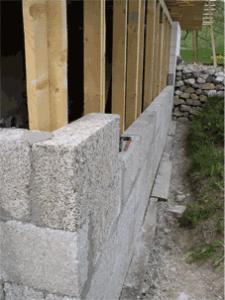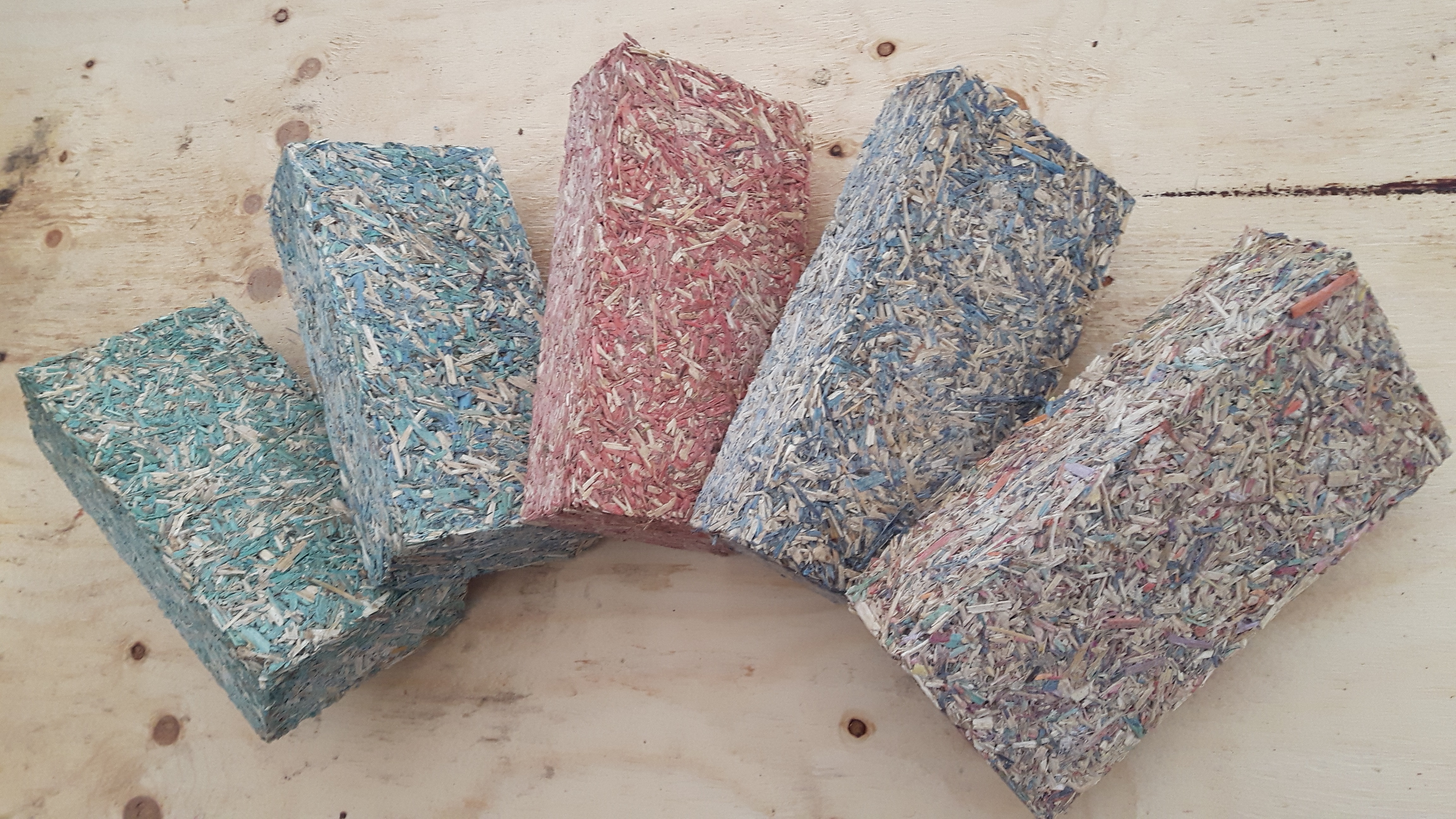Researchers and architects are invited to implement the hempcrete blocks into passive design structures


Interior designers may utilize 2'x4' panels of durable (and colorable) non-lime-based hempcrete - insulative, sound-attenuating - colorful and 'earthy'
Advantages of hemp production
- Safeguarded agricultural soils and groundwater – no herbicides, pesticides, fungicides, or synthetic fertilizers are required; hemp production, therefore, protects agricultural soils from the ‘poison & push’ regimes of industrial farming practices – keeping safe the soil food web.
- Invigorated agricultural soils – hemp plants, in symbiosis with microbes, set nutrients in the root zone (rhizosphere), similarly, but to a lesser extent than legume plants. The rhizosphere should be kept pristine and supported with minerals and organic compost – only. (Wikipedia: The rhizosphere is the narrow region of soil that is directly influenced by root secretions and associated soil microorganisms.)
- Low carbon footprint agriculture – hemp farmers log less tractor hours with zero applications of man-made substances resulting in environmentally sound farming.
- Results in an abundance of:
hemp seeds, (superfood)
Hemp bast fibre, (a myriad of historical uses and valued feedstock for modern biocomposite materials, such as the inner door panels of Mercedes Benz and Lotus vehicles). hemp shives, used as hempcrete feedstock, (2cm – 4cm long pieces of wood- like fibres resulting from the core of the hemp stalk being chopped and run through a hammer mill) - Creates rural prosperity when accessible hemp fiber value-added processing equipment exists
- CO2 is sequestered when hemp fibre is encapsulated in hempcrete: 1.6 Kg of CO2 is taken from the atmosphere to create 1 Kg of hemp stalk.
- Homeowners in the area of hemp production could benefit from affordable, sustainable, non-allergenic, energy efficient, hempcrete blocks
FAQs
What’s so special about a hempcrete wall system versus other passive house wall systems?
- Breathability – hempcrete walls breathe, a passive flow of gases permeate the hempcrete blocks. The lime in the hempcrete prevents bacterial or fungal growth
thereby filtering the air passing through the blocks and eliminating odors. - Moisture content – both the lime and the hemp fibre can accept fluctuating moisture levels without problem. Because hempcrete breathes it accepts and rejects
moisture. Hempcrete walls passively regulate indoor humidity. - Performance and Efficiency, although a conventional wall system of timber frame, baton insulation, vapor barrier, and external sheathing could insulate at R40 similarly as a 12″ thick hempcrete block wall, the hempcrete wall has superior thermal inertia, humidity regulation and durability.
- Fireproof – Yes, there is zero flame spread with hempcrete blocks
Where can hempcrete be used in a home?
To construct insulating walls in new construction or to use in renovations to create non-off-gassing/non-allergenic, breathing insulation for existing floors, walls, ceilings, and under roofs. Hempcrete can be utilized in odor prone areas, or for sound attenuation. Hempcrete walls offer thermal and acoustic insulation, as well as, healthy indoor air quality.
Do hempcrete blocks require protection from the elements?
Yes, hempcrete walls are typically finished with a lime based plaster, which breathes, like the hempcrete blocks breathe. Lime plasters are somewhat selfhealing, last for years, and allow for a wide variety of finishes. Lime plastered walls have been used in Europe for centuries. Exterior lime finishes require regular maintenance similarly as other buildings require re-painting. Alternatively, any cladding can be mounted outside the hempcrete blocks with a small air gap, as is done with brick walls.
What is the cost of a hempcrete block wall?
We estimate a cost of $18/sq. ft of wall system with 6″ thick walls and $24/sq. ft. for 12″ thick walls. These figures include lime plaster finish on the outside, the cost of the timber frame support structure and all labor.
Can Rock and Root Eco hempcrete blocks be implemented as load bearing in a structure?
No, our hempcrete blocks are for insulating purposes, they can be laid up upon one another to a height of approximately ten feet, but the blocks are to be used in conjunction with timber frame walls or steel walls which support the weight of the roof
Can I build a house from hempcrete blocks and get approval from my city or MD?
Yes, you will require an engineer’s stamp, as is required with straw bale homes.
Do I need to install a vapor barrier when I build an external wall with hempcrete?
No, hempcrete walls require no vapor barrier, they should be allowed to breathe on each side.
Do you use mortar when you lay up the hempcrete blocks into a wall?
Yes, a natural lime based mortar is used, applied to a thickness of 3-5 mm.
Do I need to install a vapor barrier when I build an external wall with hempcrete?
No, hempcrete walls require no vapor barrier, they should be allowed to breathe on each side.
How are the hempcrete blocks attached to the timber frame support structure?
L-shaped metal flanges are screwed to the studs and spiked to the top of hempcrete blocks, European standards call for connecting the hempcrete block wall to the timber frame structure once for every square meter of wall system
Thermal Inertia and Thermal Mass
a. Thermal inertia (the degree of slowness with which the temperature of a material approaches that of its surroundings). The moisture in a hempcrete wall, while not causing problems to the hempcrete itself, creates resistance to thermal change. It takes considerable energy to change the temperature of water. Hempcrete, because of its inherent moisture content, has high thermal inertia.
b. Thermal mass (related to thermal inertia, but refers directly to how much heat energy a material can store.) Dense materials like cement have high thermal mass, and lightweight materials such as wood have low thermal mass. Hempcrete is a combination of dense cementitious minerals and lightweight organic fibres, and it is defined as a biocomposite with high thermal mass.
Nonlinear variations in temperature observed in the middle of hemp concrete wall can be explained by the appearance of internal phenomena of phase change (evaporation and condensation). When the outside temperature rises suddenly, liquid water vaporizes within the material, which results in a sharp increase in relative humidity and damping of the temperature rise in the hemp concrete given the natural endothermic vaporization phenomena. Similarly, when the temperature imposed on the outer wall decreases abruptly, exothermic condensation phenomena occur.
